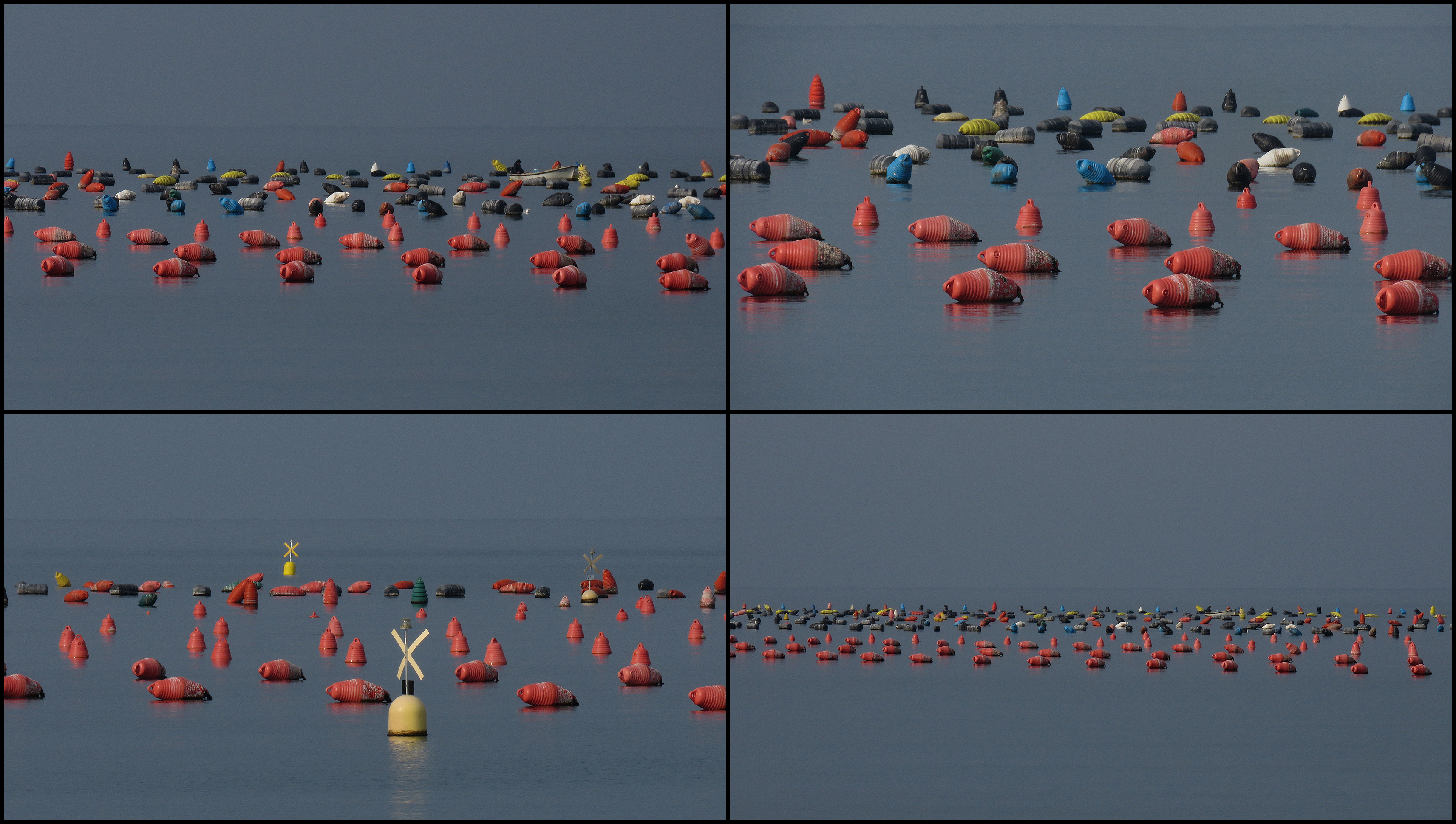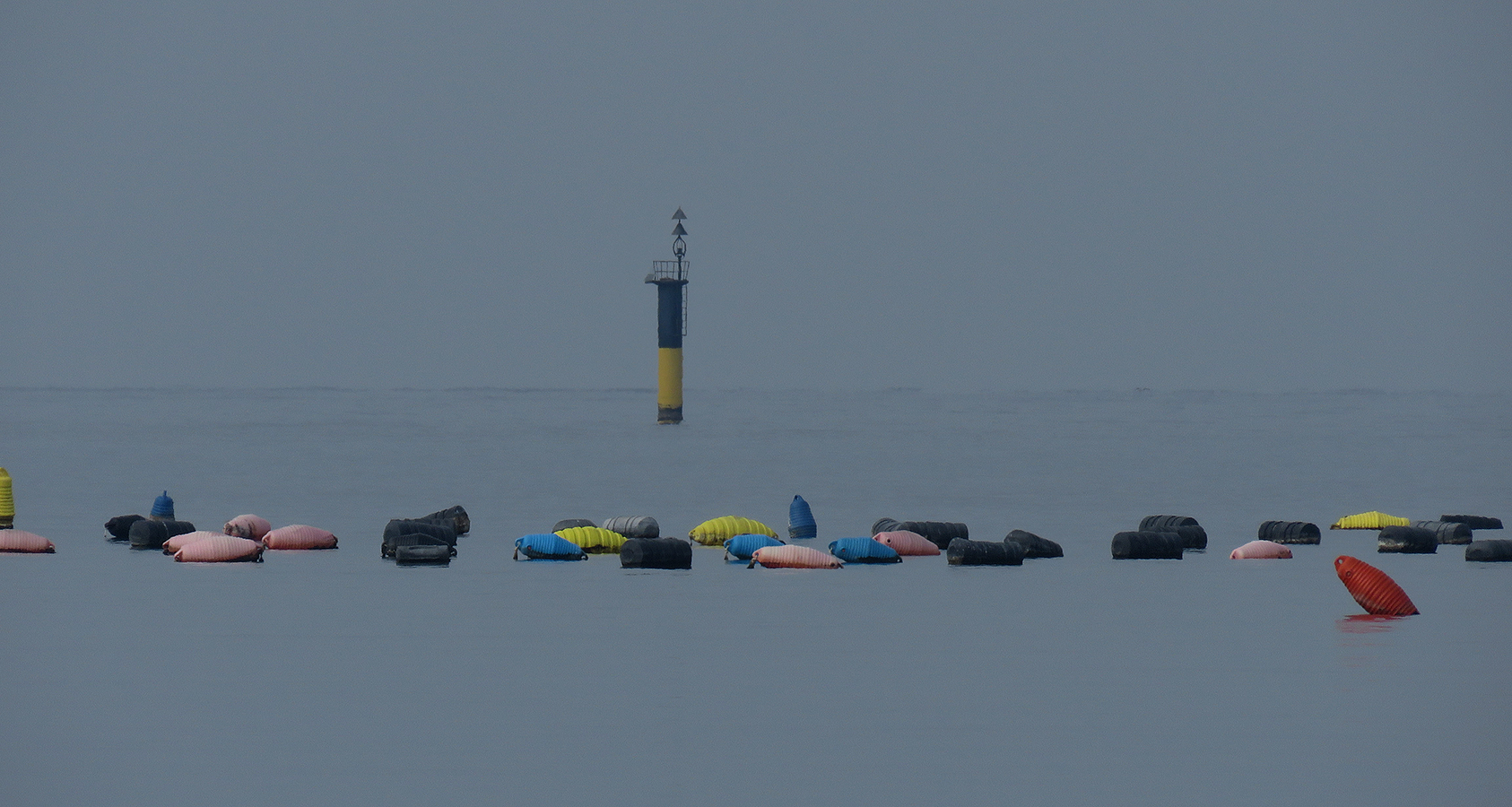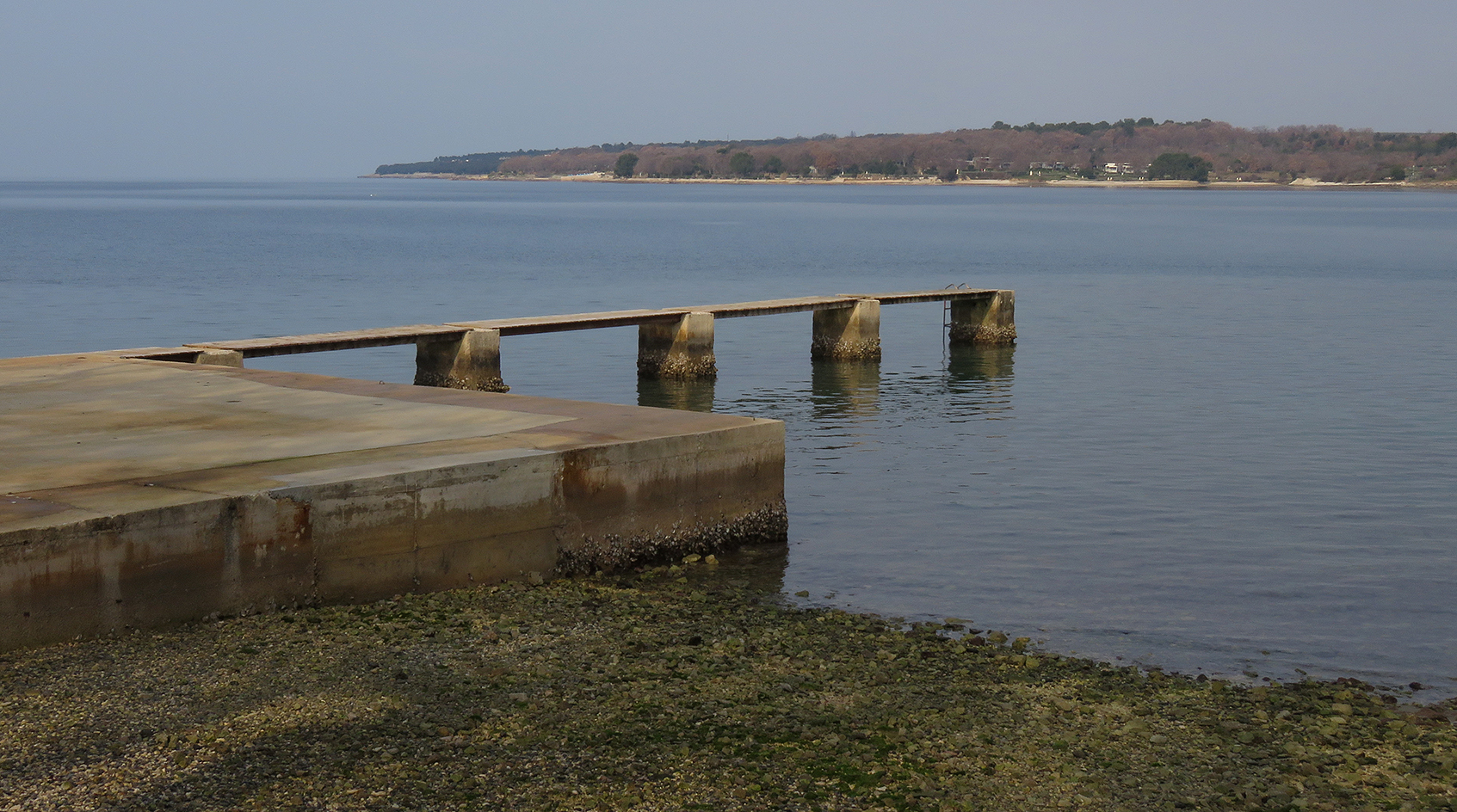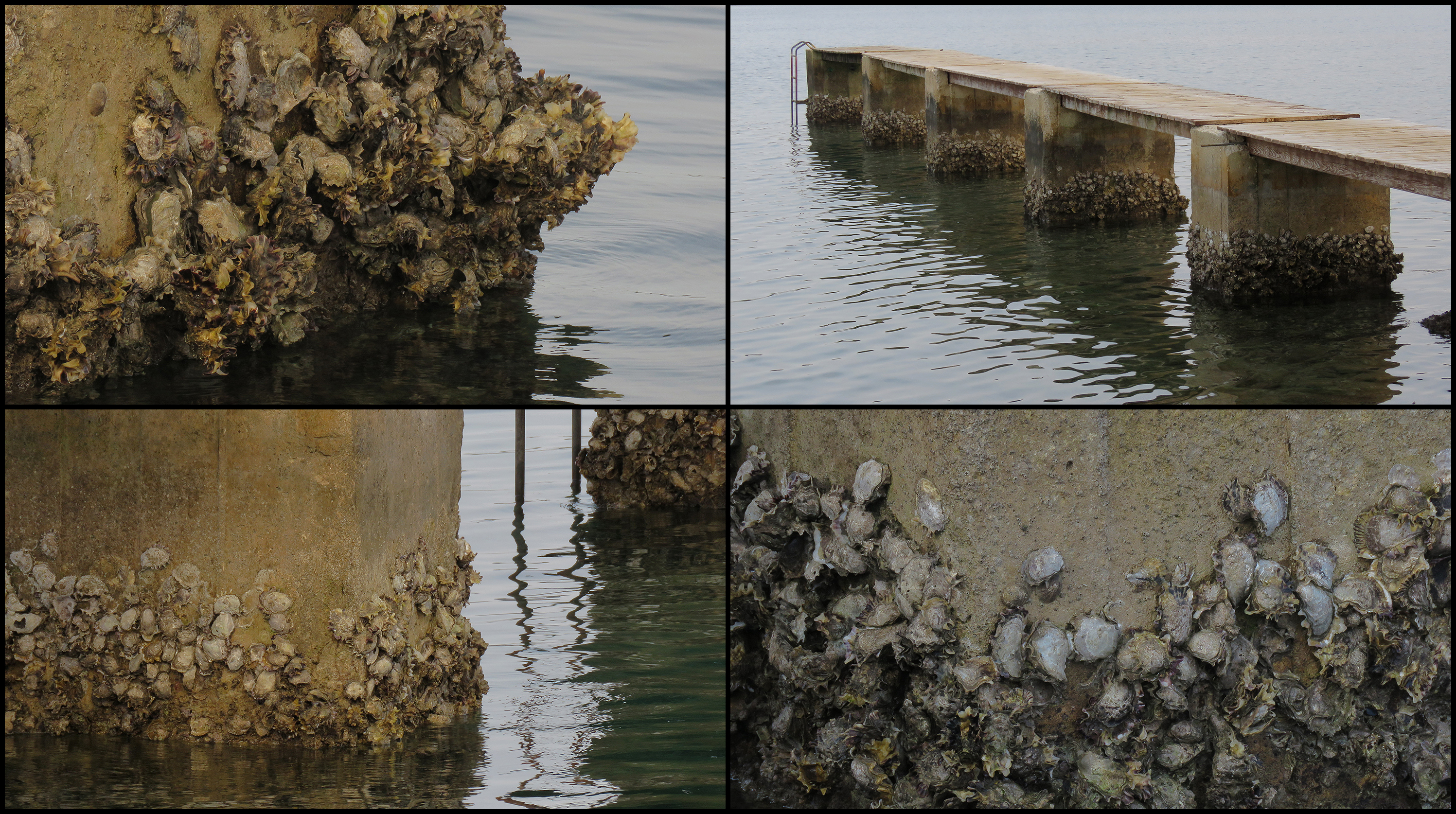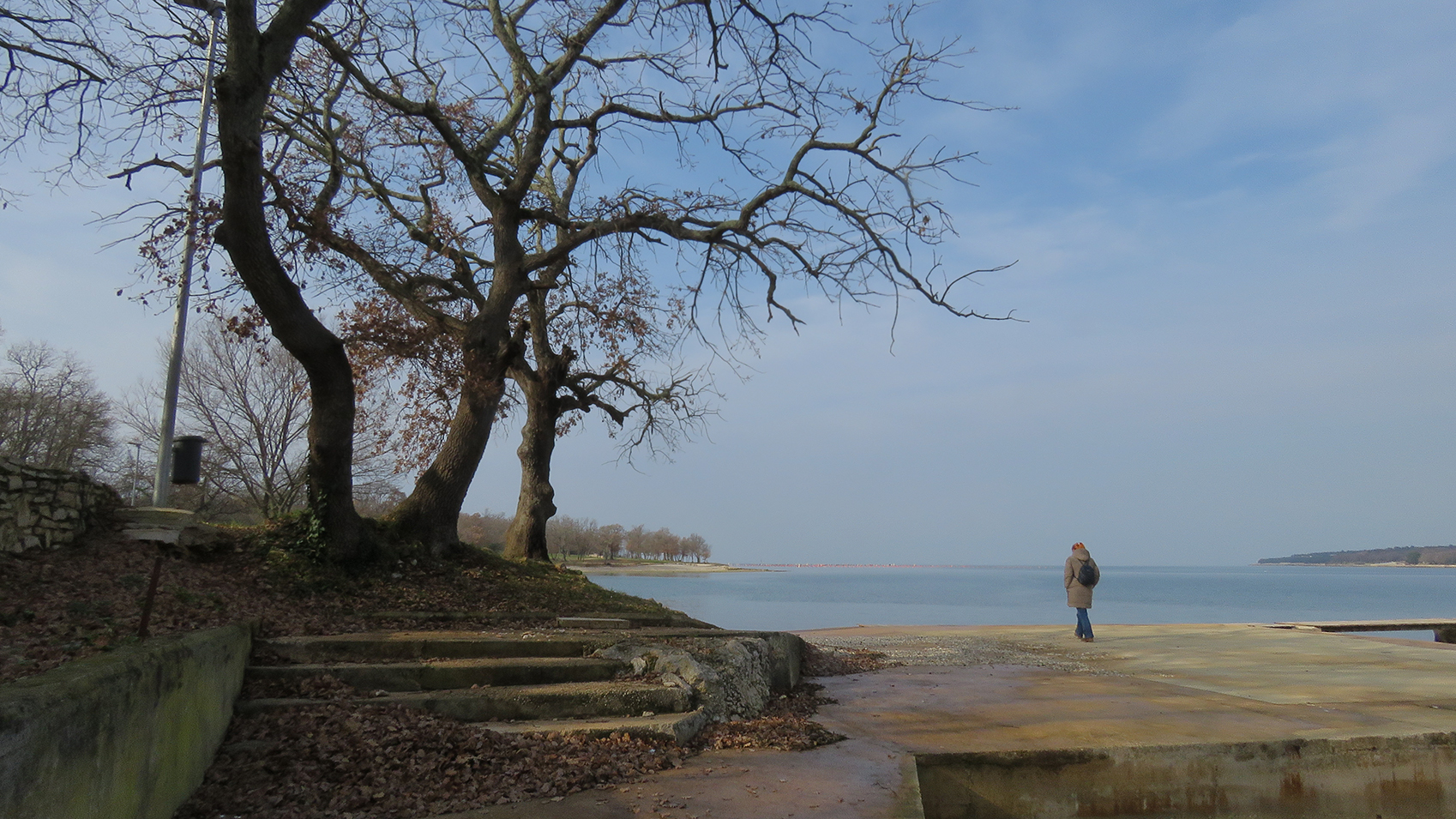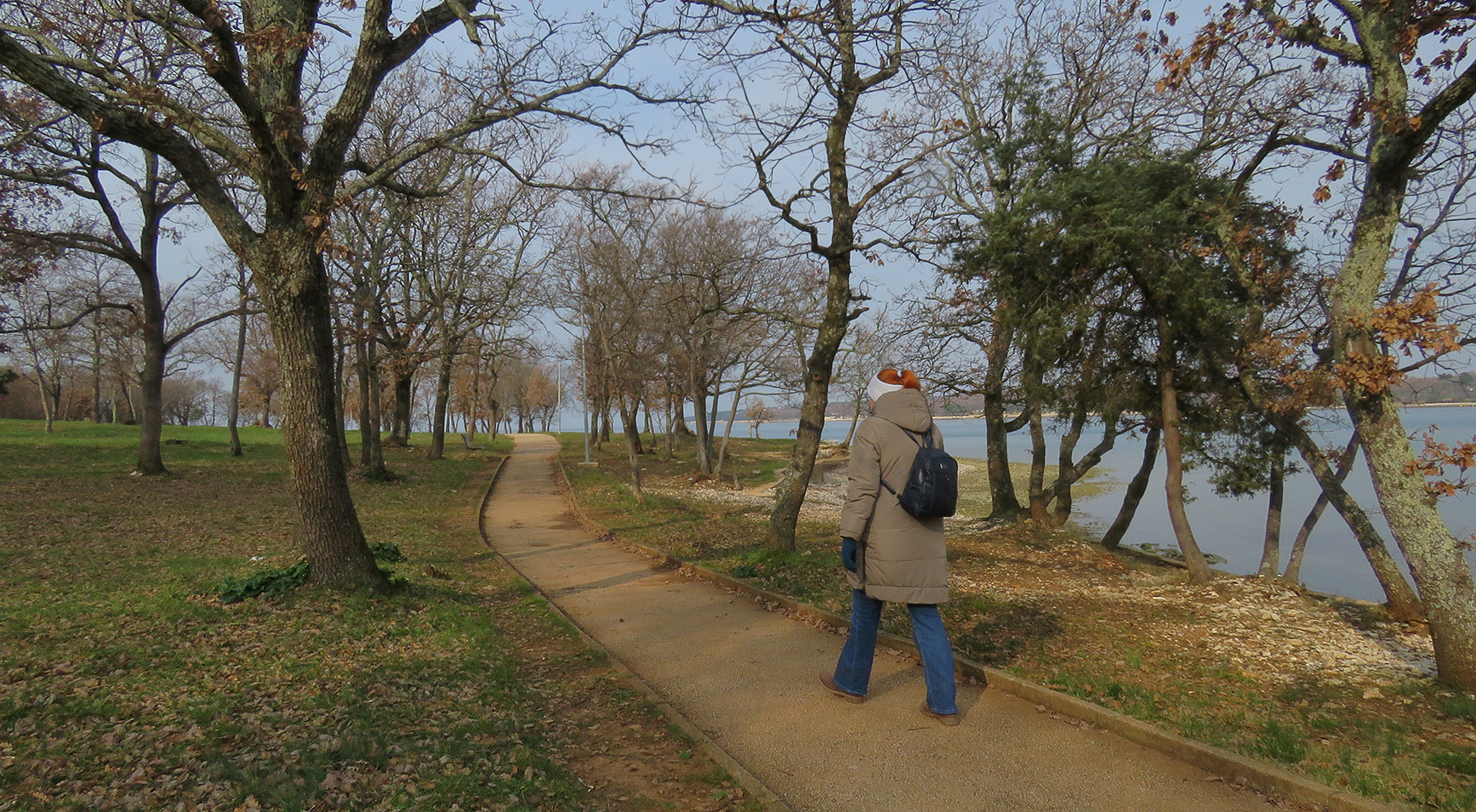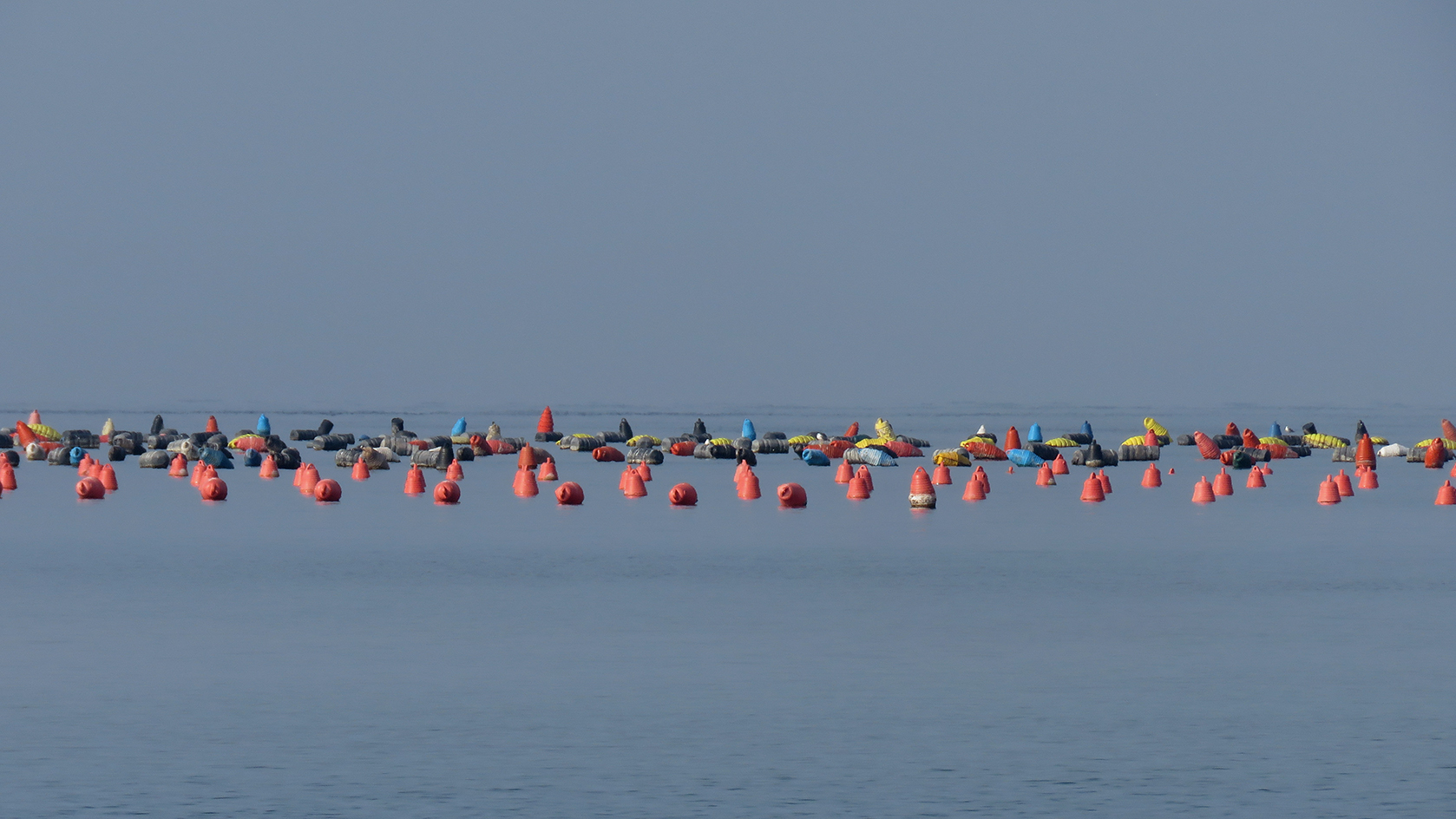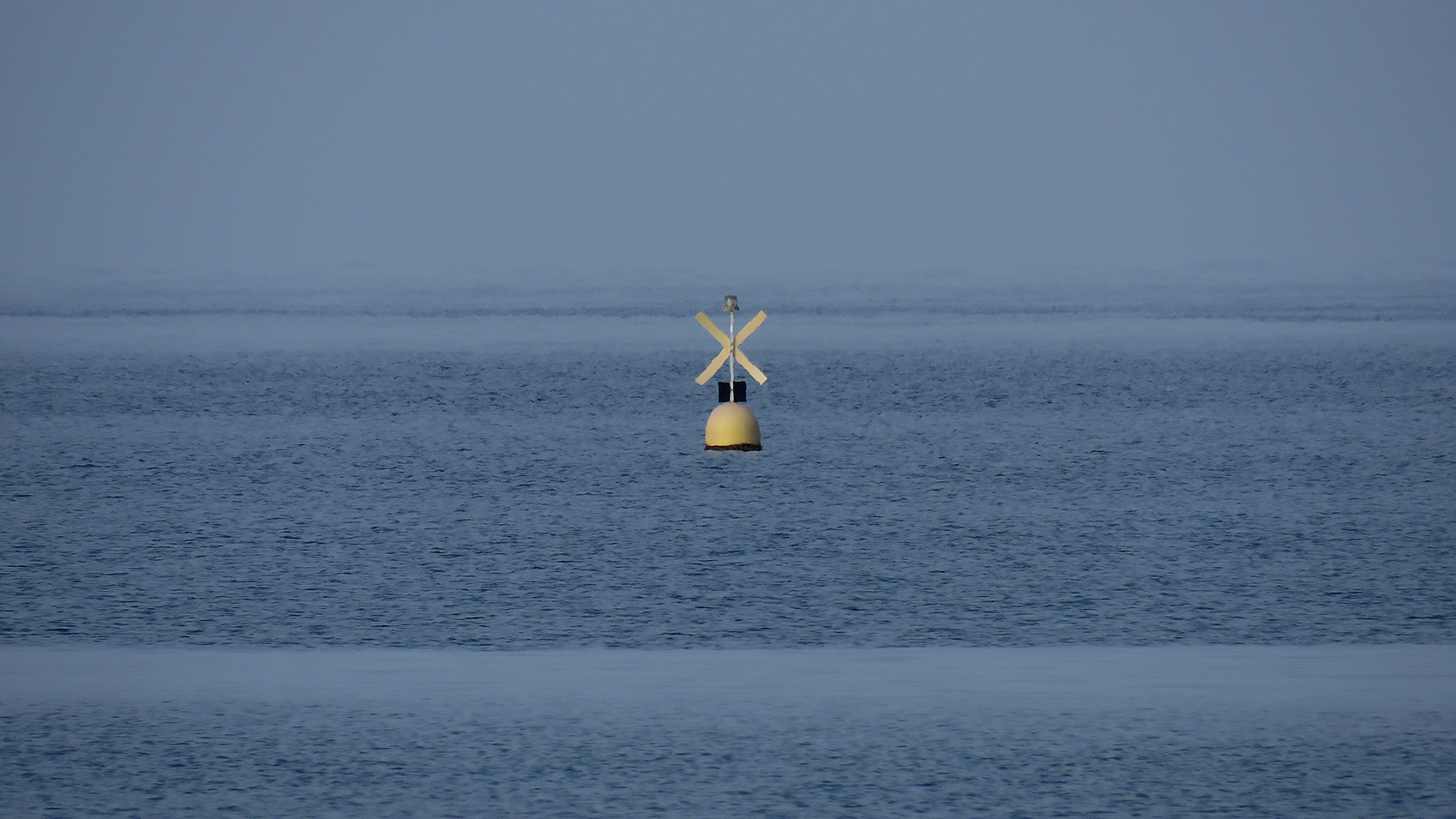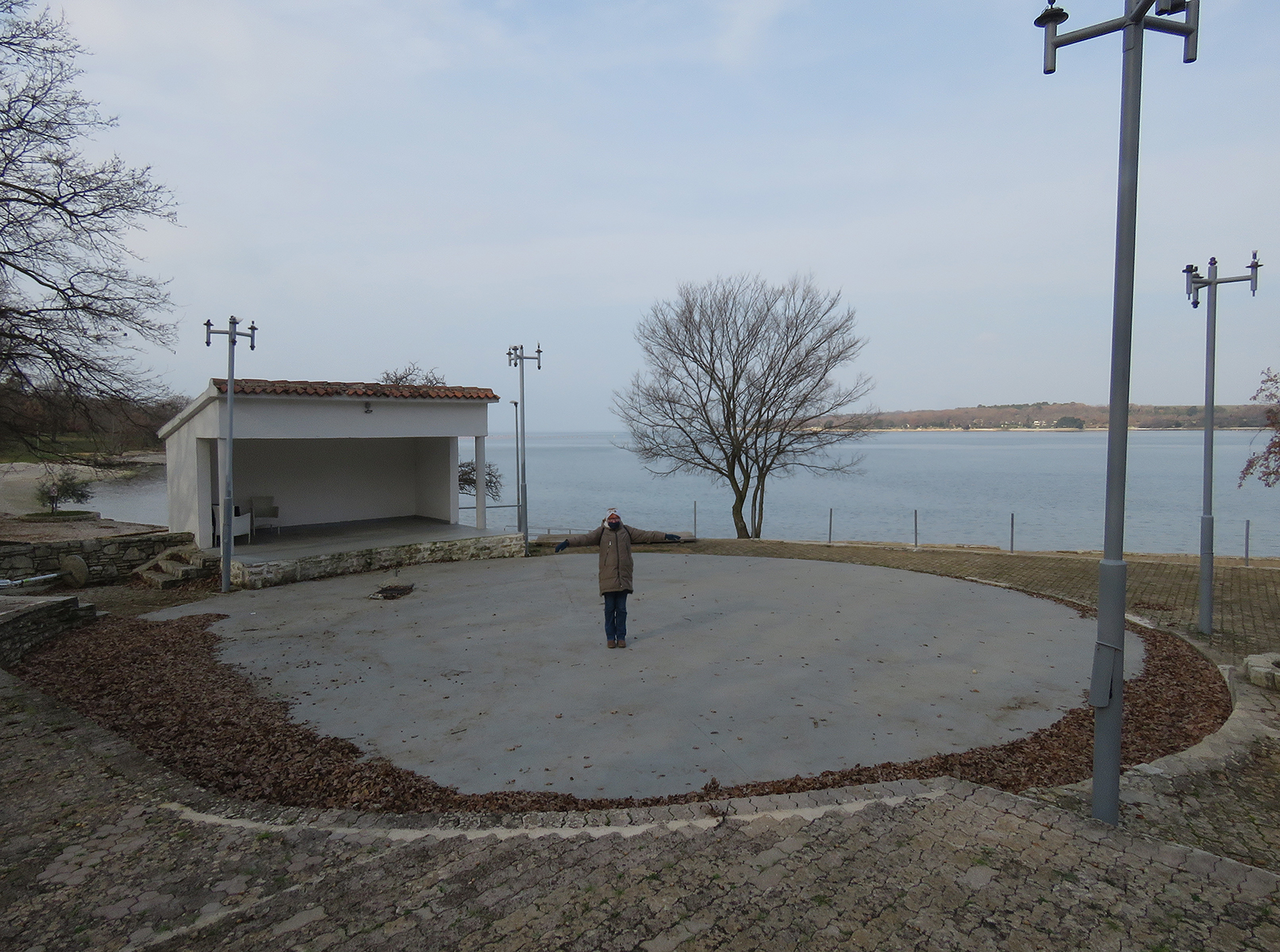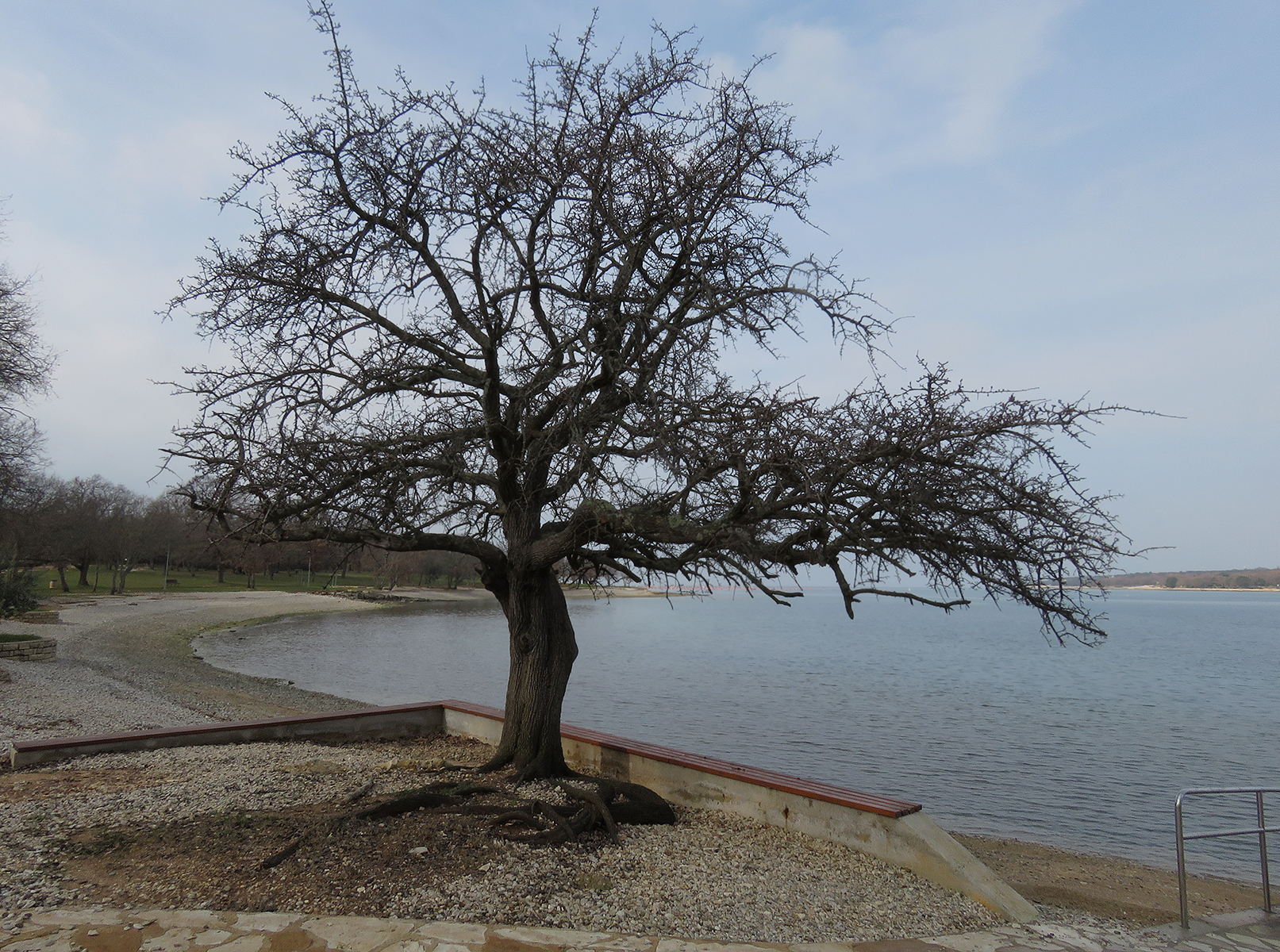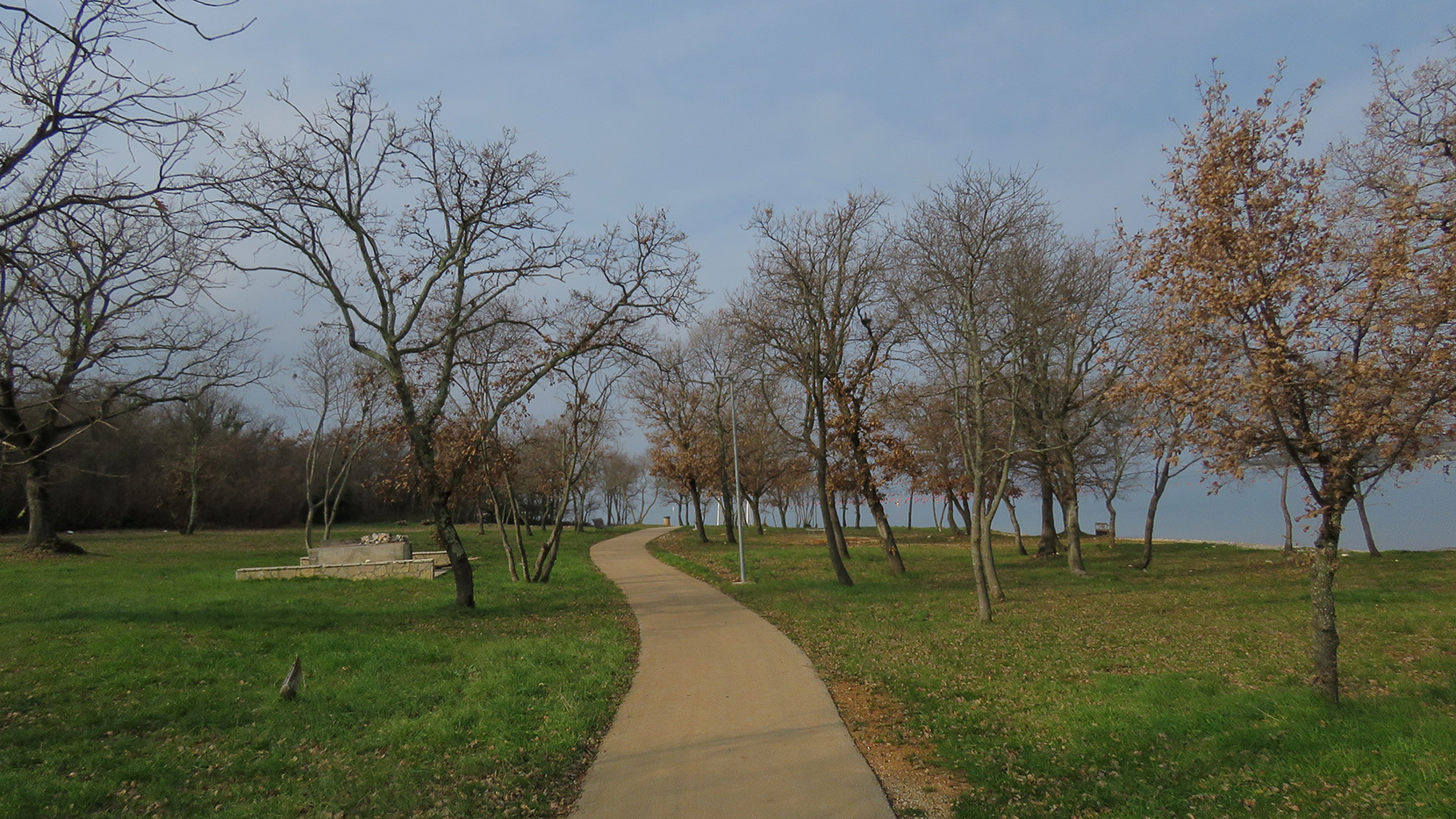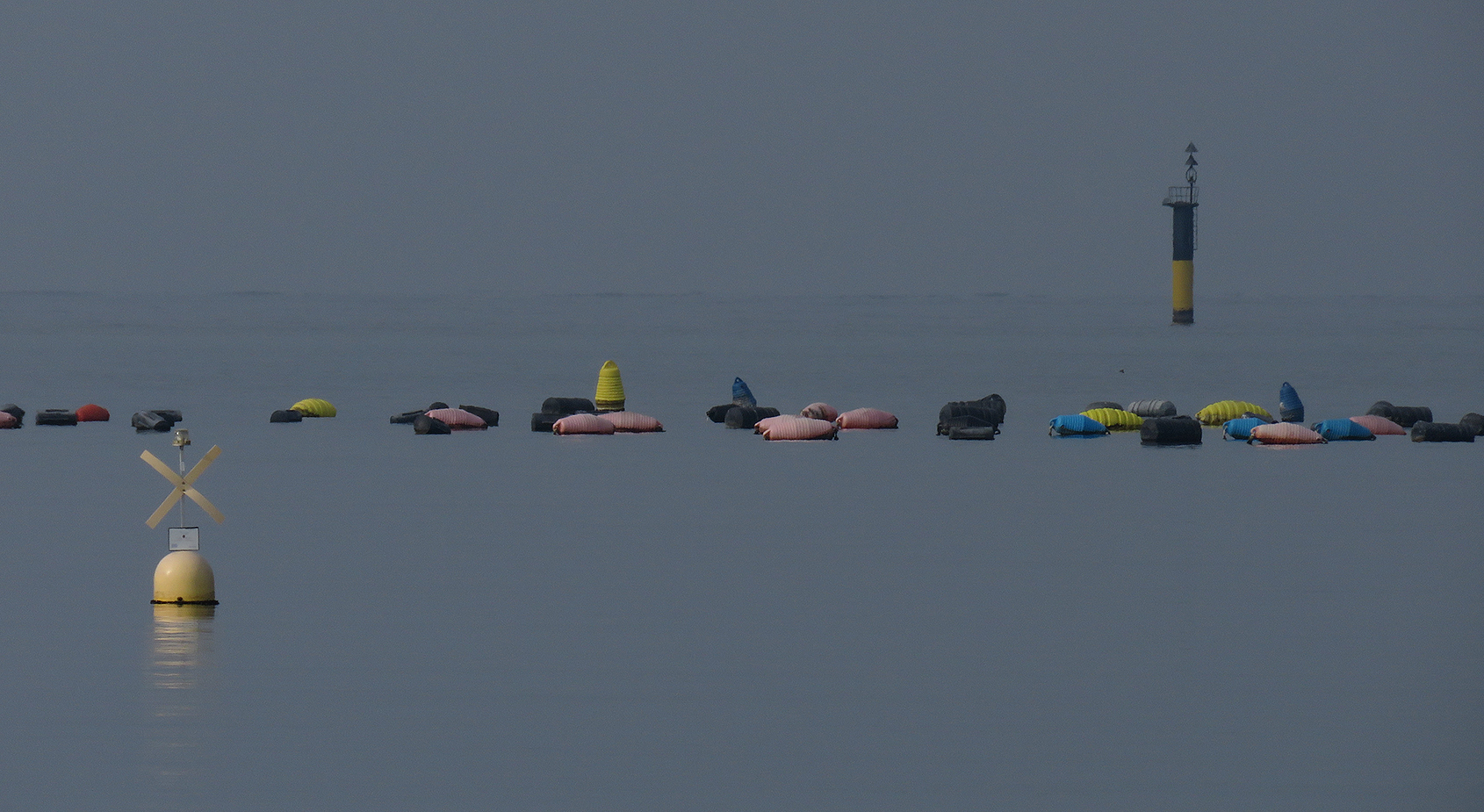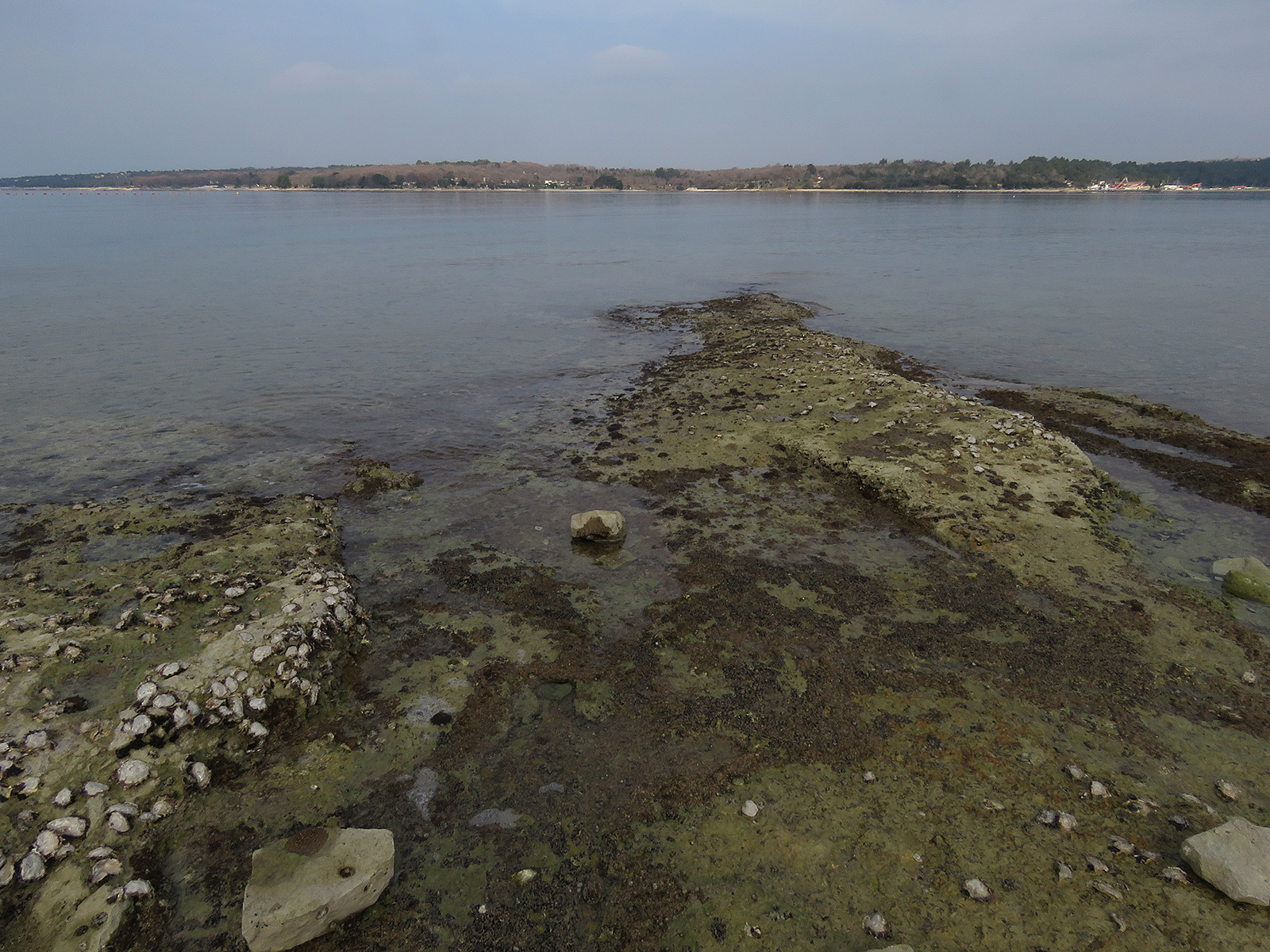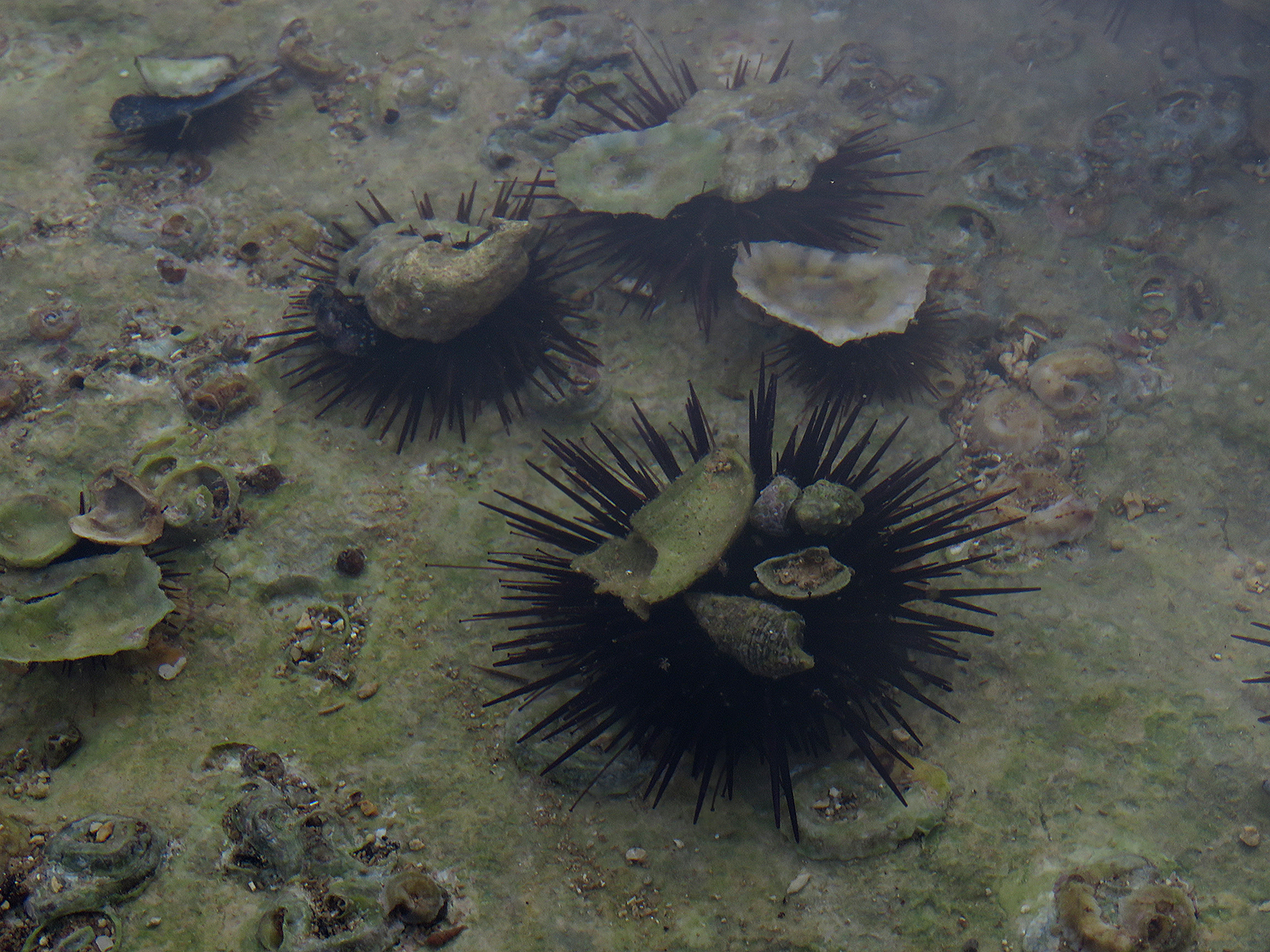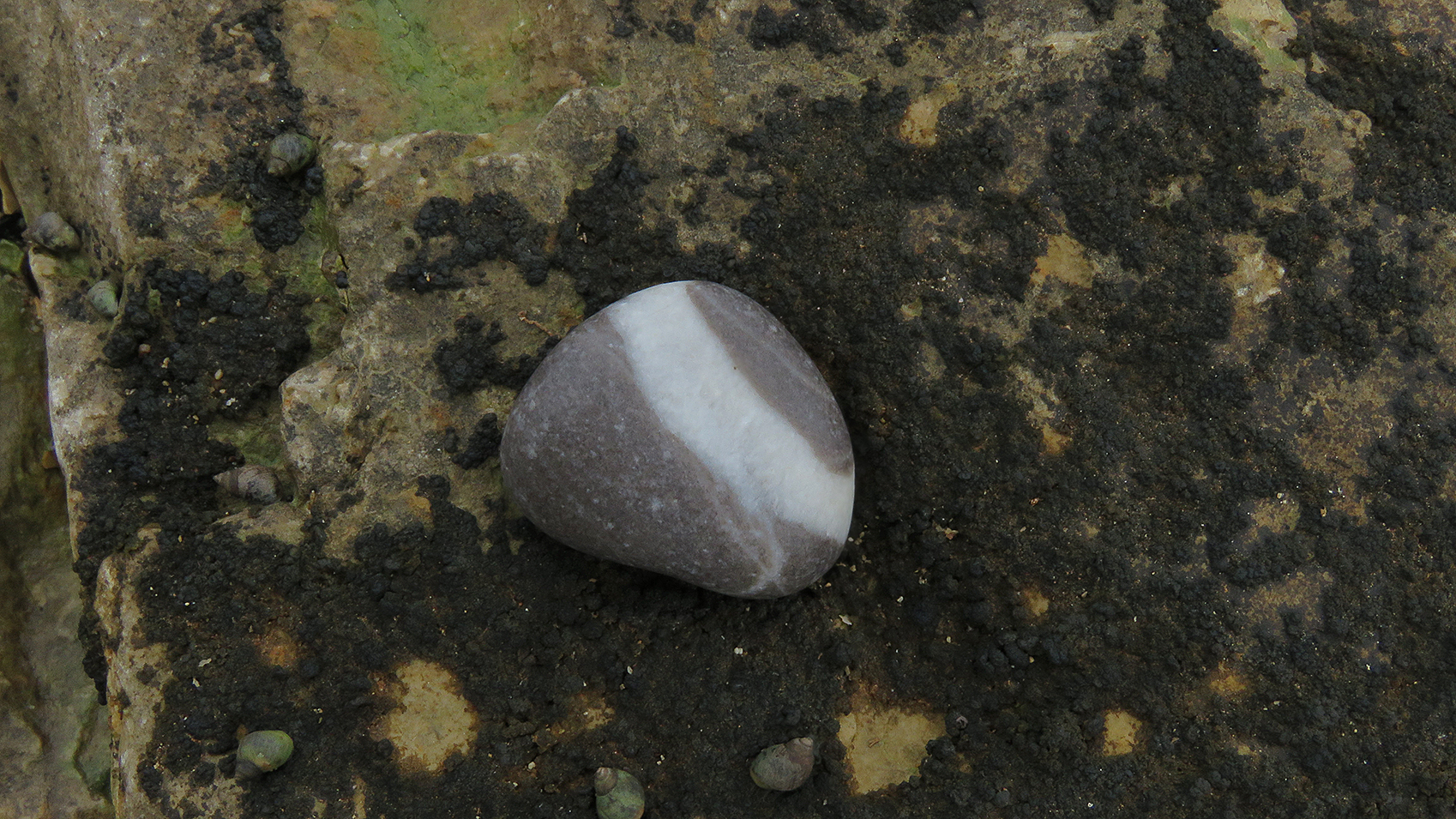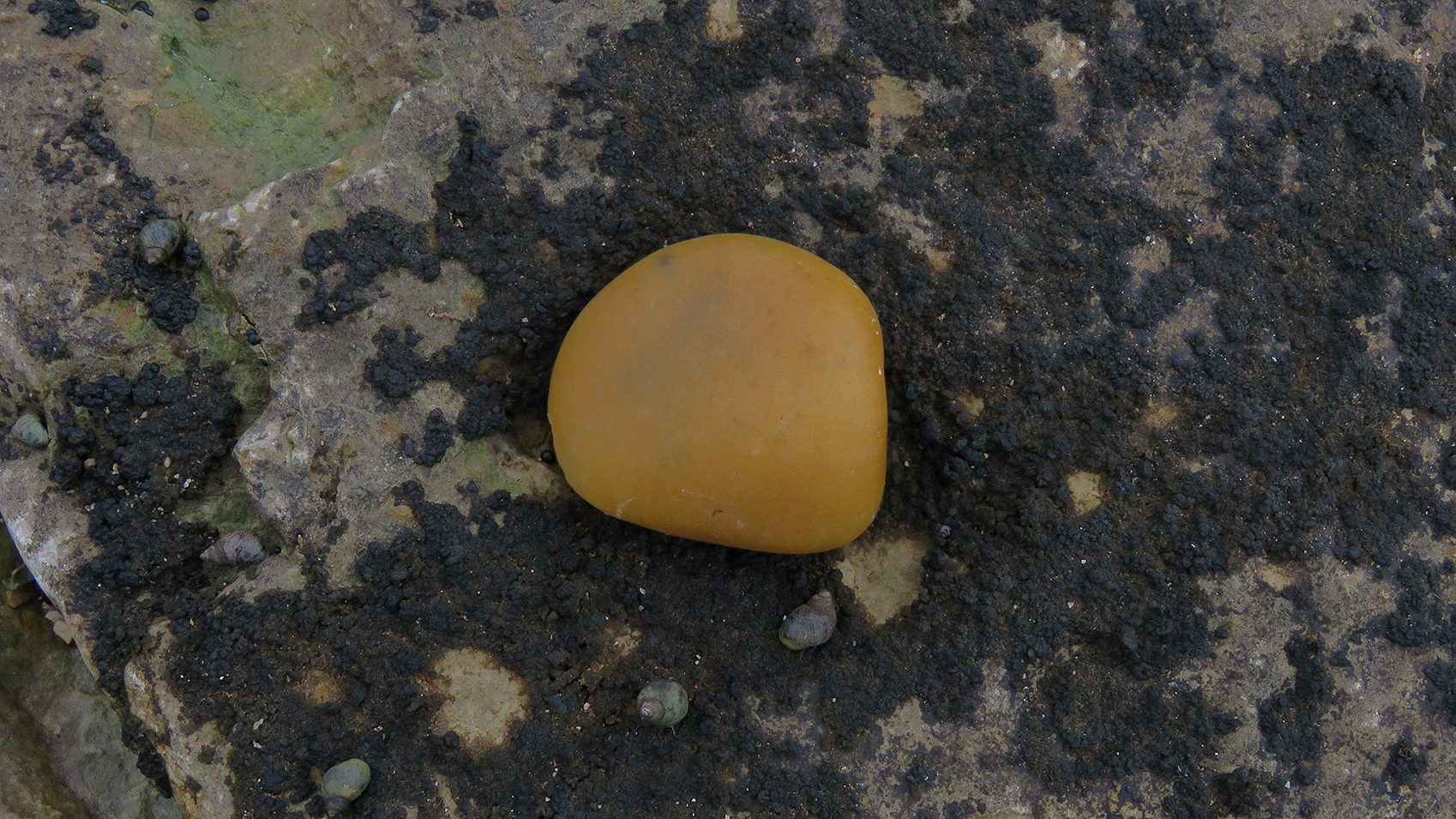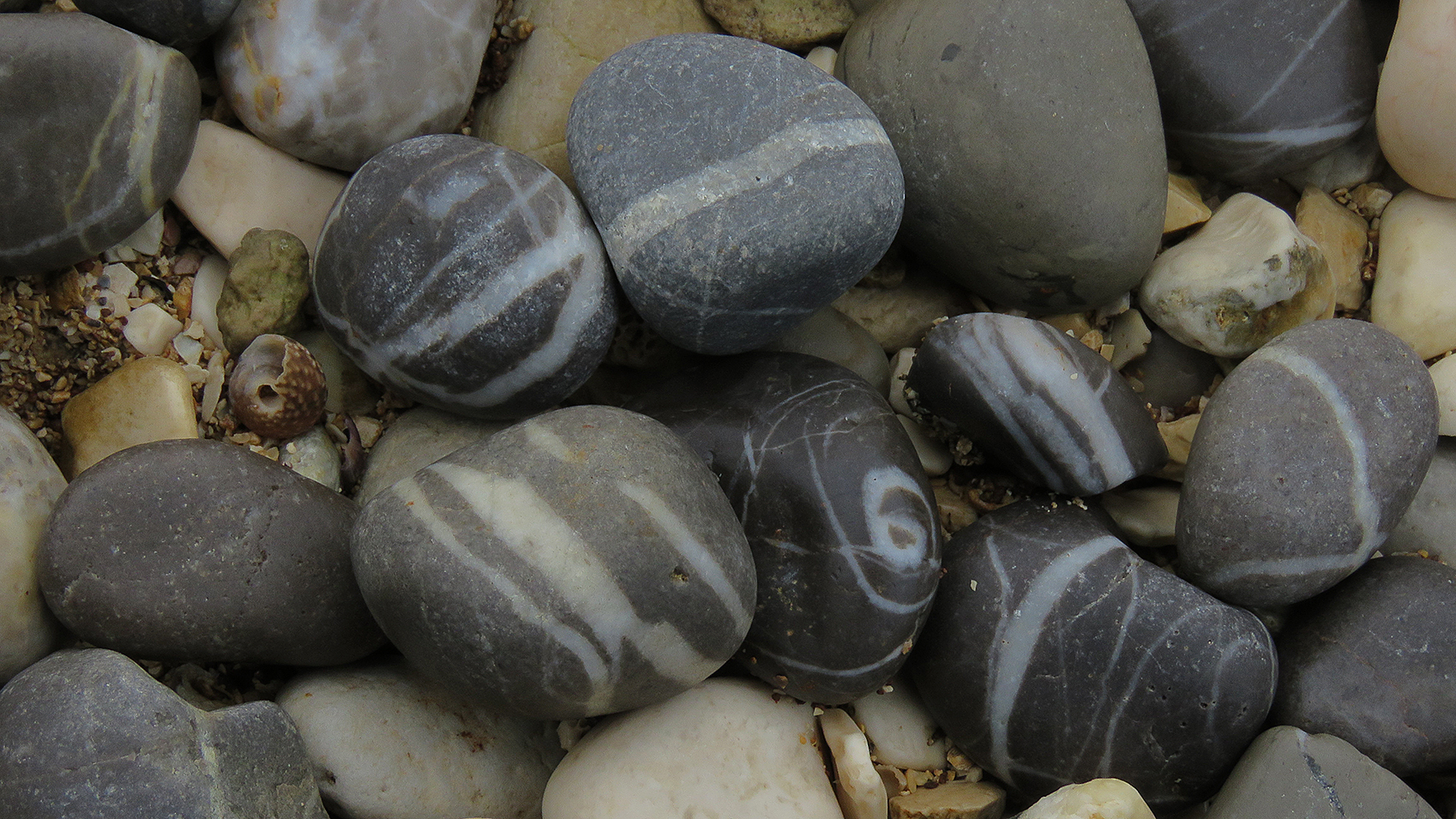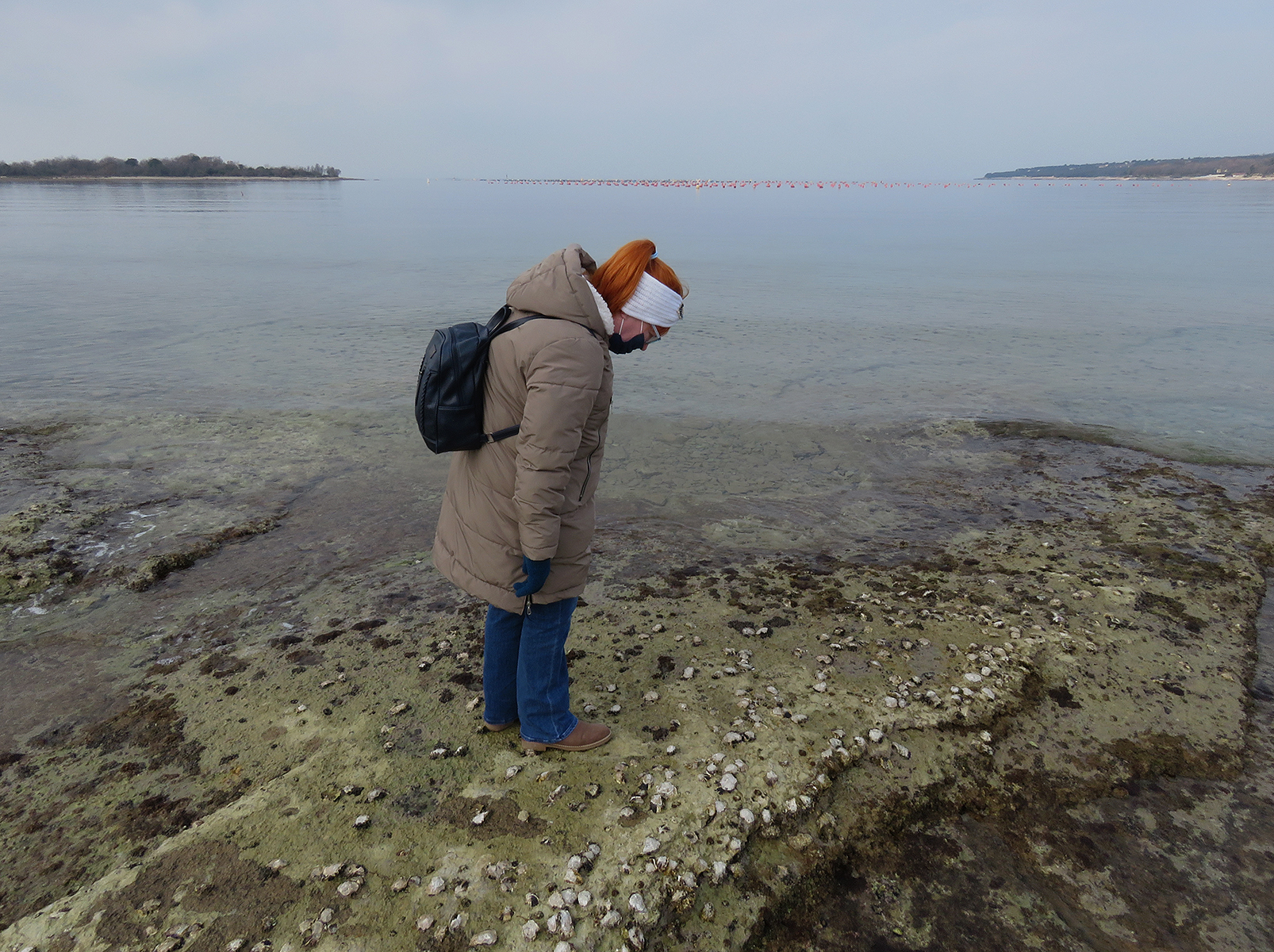The 1st of February was a pretty cold Wednesday. I drove to the place called Chervar Porat, about 70 kilometers north of my hometown, and took a walk by the sea there.

Here you can see the colorful buoys of the floating farm that produces mussels and oysters.
One of the highlights of that walk.
All that eye-catching stuff that serves for clam farming and navigation combined with the calm sea that almost seamlessly merges with the sky, created a very artsy, surreal atmosphere in the bay.
In this photograph, you can take a look at the crossroad near the parking lot in which I left my car. The walk started there.

Chervar Porat is a resort village built in the 1970s. It's a pretty unique village that looks like a suburban neighborhood of a city, isolated and surrounded by forests and the sea. I'll show you the village, but not today. Not in this post. On the 1st of February, I photographed only the beaches, the tourism-related infrastructure near those beaches, and a fairly wide variety of details found in the intertidal zone. In the above photograph, I zoomed in on apartment buildings near the harbor.

Because of the chimney or the chimney-like pole, this thing looks like a little factory from a distance. From up close, It still looks like some ridiculously small factory. The only thing I'm sure of is that I have no idea what this thing is.
Here you can see the only pier on the beach. There are many piers in Chervar Porat but they are all in the harbor. Only this one has been built on the long stretch of coastline where people go swimming and do all the usual and unusual beach stuff.
The tide was very low so a good chunk of the underwater parts of the pier was exposed and visible. Those lower parts were incrusted with oysters.
In this photograph, you can see a friend that was there with me passing by the pier. You can also see some trees near the sea.
From my perspective, those coastal trees are the most surprising aspect of Chervar Porat. In my hometown on the southern cape of Istra, and in all other places I visited along the coast, the vegetation near the sea is prevalently or exclusively evergreen. You can see mostly pines and various evergreen shrubs. Evergreen oaks (Quercus ilex), sometimes. But here, practically all the trees are deciduous, and oaks typical for the inland forests are the most numerous.

For me, accustomed to seeing pines, palms, olives, and stuff like that along the beaches and in resort towns, the barren branches and fallen leaves near the calm water of the bay created a very strange, unexpected atmosphere. It looked a bit like a Photoshop creation. Like a piece of inland scenery transplanted to the coast. And then ...
... there were the buoys ...

... to turn strange and unexpected into artsy and surreal.

I definitively found more than I expected in this place.
Here you can see a signaling buoy with a yellow special mark, a radar reflector, a cross of San Andrés, and yellow light of isolated flashes. In the following photograph ...
... a friend who was there with me is standing in the center of an empty summer terrace. This circle looks like something made for dancing ...

... and this little construction looks like a place for musicians. Or DJs. It looks almost like some kind of temple.

Here you can see the advert in front of the small fast food restaurant.

Here you can see more of that fast food, beach bar, and ice cream booth stuff.

In this photograph, I zoomed in on the sailing boats in the harbor.
Here you can see another lovely coastal tree.
The path shown in this photograph leads to the swing that will be presented in the following shot.

It's a very solid, well-made swing ...
... with a nice view. While swinging, you can look at the sea ...
... the buoys ...

... and some distant rocks that can be seen only when the tide is very low.

Here you can take a good look at a distant sailing boat ...

... anchored in one of the inlets across the bay.
Thanks to the exceptionally low tide ...

... I was able to photograph many interesting things in the intertidal zone. Here you can see a bunch of sea urchins partially covered with empty shells and fallen leaves. Those shells and leaves didn't just accidentally fall on the spines.

Sea urchins actively collect those fragments with their many podia (tube feet that look like little tentacles) and used them for camouflage. The sea urchin shown in this photograph has a fashionable spiral cap on its top.
When it comes to the name of the species, this is the Arbacia lixula, commonly known as the black sea urchin.

Here you can see an interesting, quite decorative pattern created by the growth of some, probably microscopic, sea organisms that I wasn't able to identify.

This is the empty shell of a Venerupis philippinarum clam. These delicious clams are native to the coasts of East Asia but can be also found in many other parts of the world, brought as a cultivated species that ended up being successfully adapted to various new habitats outside the clam farms.
In one of the inlets, I found a nice variety of very decorative little stones. This one is gray with a thick white stripe.
Here you can see a lovely yellow one.
These gray ones with white stripes were the most numerous. Each one is unique. They look a bit like beautifully designed candies. Is hard to resist the urge of collecting a ton or two of these things and bring them home.
In this photograph, a friend who was there with me is looking at the sea rocks, amazed by the fantastic world uncovered by the low tide.

This public artwork was created by the algae.

A combination of green and violet algae.

The violet ones look exactly like lichens.

The interesting sea snail, shown in the foreground of this photograph ...

... is the Bolinus brandaris ...

... commonly known as the purple dye murex or the spiny dye-murex. This predatory snail, like many other species in the family Muricidae, can produce a secretion that is milky and without color when fresh but turns into a powerful and lasting dye when exposed to the air. Bolinus brandaris was used by the ancients to produce Tyrian purple fabric dye.

Here you can see an interesting rock formation that looks like a completed puzzle or a map of some region with clearly marked state borders. The following photograph ...

... shows the same kind of rock but here you can also see a bunch of barnacles that look like strange volcanoes on the map of an extraterrestrial planet.

These white, lichen-like things are some kind of algae, I suppose.

I had plenty of fun exploring the rocks in the intertidal zone.

Here you can take another look at the harbor. I wasn't very far from there when this photograph was taken, which means that the post will reach its end soon.

On the rotting stump near the path that leads along the shoreline, I photographed some hairy little polypore mushrooms.

This small, truck-like vehicle was advertising the excursions to the Postojna Cave, a very spectacular cave in Slovenia, about 120 kilometers north of Chervar Porat.

AND THAT'S IT. THE WALK ENDS HERE. AS ALWAYS, THE PHOTOGRAPHS ARE MY WORK.
